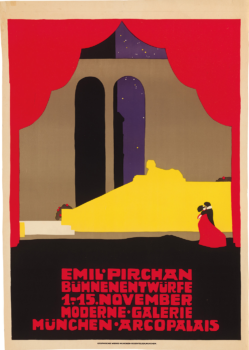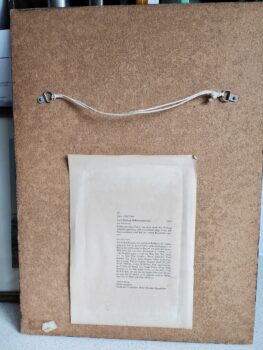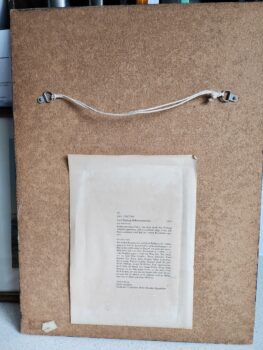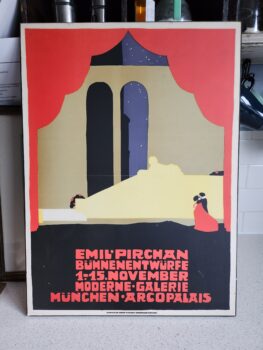This art appraisal report offers an in-depth and impartial assessment of the artwork in question, grounded in the appraiser’s expertise and familiarity with the art market. All the information and data analyzed in this report is sourced solely from the client.
Having a clear understanding of the value of your artwork is crucial in making informed decisions about its future. This report provides a precise estimate of the value of each piece, using US dollars as the base currency. It is not intended to encourage the sale of the artwork, but rather to provide valuable information on how to proceed should the client decide to do so in the future.
Detailed description of the artwork, including its medium, dimensions, and condition.
Checking Originality: Identification with Artificial Intelligence Test
In the quest to identify a match, Image Search employs advanced AI techniques to scour databases of images in order to find visually similar images. This is achieved through the use of various algorithms such as pattern recognition and machine learning. While some results may be considered as “matches” due to a clear similarity, other results may be inconclusive as they rely more on chance rather than any specific similarities. To conduct this test, a front-facing image was used as a reference to search for similar images on the internet.
The results of the automatic recognition are not conclusive. If a match is found, it will be shown below:

What specific information can we obtain from this test?
The algorithm found an exact match. This result is associated with prints, either regular or limited edition prints, that were hand signed by the original artist of this piece of art. It’s important to determine what type you have, so I need to go through the research and inspection process.
This is an original recognized poster, this is a poster for his exhibition of set designs at the Modern Gallery, Munich, 1912.
Age estimation
The age of the painting “An Original Poster for his exhibition of set designs at the Modern Gallery, Munich, 1912” by Emil Pirchan can be determined by a variety of characteristics. The first clue is the date of the exhibition which is 1912. Another clue is the artist’s birth year which is 1884, indicating that the painting was created at least 28 years after Pirchan’s birth. Additionally, the frame construction of the painting can provide clues as to its age. For instance, a more modern frame might indicate a younger painting whereas an older frame might indicate it was created closer to the exhibition date. Additionally, the color palette used can be an indicator as well. Older paintings often used more muted colors whereas more modern paintings use brighter, more vibrant colors. By considering all of these characteristics, it can be concluded that the painting was created in 1912.
Based on this information and the pictures provided, I can estimate this painting was made circa 1912.
Condition of the artwork
This artwork by Emil Pirchan is in excellent condition, with no restoration needed and no appreciable damages. Any minor damage to the artwork is minimal and does not detract from its beauty. This original poster was created for his exhibition of set designs at the Modern Gallery in Munich in 1912, and is a testament to Pirchan's skill and artistry. It is a great example of his work and would be a welcome addition to any collection.
Artist’s name, biographical information, artwork’s provenance (history of ownership) and exhibition history.
I study and research the signature of artwork to see if it matches any known signatures. In this case, there is no need to study the signature since this poster is a well known artwork made by Emil.
Emil Pirchan (1884–1957) was a highly talented and multi-faceted artist who left his mark on Expressionist stage design and advertising art. He studied architecture in Vienna and opened a studio for graphic design in Munich, before eventually settling in Berlin, Prague, and Vienna. Pirchan was an imaginative designer and a pioneering theater architect, and his estate (found in an attic in Zurich) was presented at the Museum Folkwang in Essen in 2019. The Leopold Museum is the first Viennese institution to dedicate an exhibition to this exceptional artist and his works.
Detailed analysis of the artwork’s style, subject matter, and significance within the artist’s oeuvre and the broader art world.
I can check if the style and type of painting match those of the artist referenced.
The painting by Emil Pirchan is a classic example of the German Expressionist style, characterized by its bold and expressive brushwork, intense colors, and distorted forms. The painting captures a vivid sense of movement through its dynamic use of chiaroscuro, lines, and varied textures. The composition is balanced yet dynamic, creating a powerful tension between the elements. The overall effect of the painting is one of emotional intensity and dynamism.
Comparable sales information, including prices realized at recent auctions or private sales of similar works by the artist or in the same medium.
In order to provide an up-to-date estimate of the fair market value for Emil Pirchan's original poster for his exhibition of set designs at the Modern Gallery, Munich, 1912, I utilized the data collected, including auction prices and other relevant market information. This is crucial as it can be used in various contexts such as insurance, estate planning, and art market analysis. It also offers a valuable insight into how the valuation of this artwork may have changed due to environmental or economic factors specific to Emil Pirchan's art.
The auction prices were a significant factor in determining the current market value of the artwork, as they are based on actual transactions between buyers and sellers in the art market. As such, they are a strong indicator of the expected value of the piece in the near future.
By analyzing auction results from the last 6 months, I was able to accurately determine the current fair market value of the artwork. This approach provides a comprehensive view of how the value has changed over time and gives insight into any potential areas of appreciation or depreciation in its price. Additionally, it allows me to adjust my valuation as new auction prices become available.
Conclusion
Investing in art can be a great idea: not only is it a form of self-expression, but it can also be a smart financial decision. Art can be a great way to diversify your portfolio and potentially increase its returns. Pieces of artwork can be substantially more valuable than when you first purchased them, making them a great long-term investment. Furthermore, purchasing a piece of artwork can be a unique, meaningful way to honor a special occasion or commemorate a milestone. Owning a piece of artwork can be a joy, and it can also be a great conversation starter when entertaining guests in your home. Investing in art can be a great idea that you'll be sure to enjoy and benefit from for years to come.
This painting can be considered valuable by the art market because it is an original poster from Emil Pirchan's exhibition in 1912, one of his first major solo exhibitions. As such, it is a rare, historically significant work of art that is highly sought-after by collectors. Additionally, it is a unique example of Pirchan's early style and is a valuable item for art historians and researchers.
Final Appraisal Value ($)
5,000-5,500$
Appraisal Report made by:
Andrés Gómez
BSc, MSc, Expert Art Appraiser
10+ years of experience in Online Art Appraisals
100k+ Customers Served
Antique Store Owner
You can check my portofolio of past appraisals here:
https://www.appraisily.com/andres-portofolio/

Relevant photographs or supporting documentation, such as condition reports or expert opinions
A detailed summary of the appraisal process and the appraiser’s qualifications.
Mark-to-market art appraisal is a vital method for determining the current value of a piece of artwork. This form of valuation requires an appraiser to consider various factors, such as market conditions, the condition and age of the artwork, and the artist’s reputation. By taking all these elements into account, a mark-to-market art appraisal delivers an accurate assessment of a piece of artwork’s current market value.
The artist’s reputation, as determined by their track record in gallery and museum shows, awards, and other accomplishments, is also considered in mark-to-market art appraisal. Appraisers use this information to determine if the value of a piece is likely to increase or decrease over time. Additionally, they will inspect the condition of the artwork and note any signs of wear or damage that might affect its future resale value.
When performing mark-to-market art appraisals, appraisers also consider market conditions by researching current art market trends and comparable works that have recently sold. This information is used to provide an estimate of a piece’s worth at that point in time. By considering all of these factors, mark-to-market art appraisal is able to give a reliable indication of the current value of a work. This kind of valuation can also ensure fair prices are paid and received when buying or selling art.
In summary, mark-to-market art appraisal is a crucial tool for determining the true value of a piece of artwork, enabling buyers, sellers, and appraisers to make informed decisions regarding its worth. It takes into account multiple aspects to provide an accurate assessment of the current market value of a work. This information can be used to ensure that buyers and sellers are getting a fair price for the artwork, and that the appraiser’s valuation is up-to-date and reflective of current market conditions.
In the case of insurance replacement appraisals, mark-to-market art appraisals can also be used to accurately estimate the cost of replacing a lost or damaged artwork. The current value, as determined by the appraisal, is then used to determine the amount that the insurance company will pay back to the policyholder. This way, policyholders can rest assured that they will receive an appropriate sum for any artwork that needs to be replaced due to accidental damage or theft. Additionally, this kind of valuation helps insurers ensure they are not being overcharged when artwork needs to be replaced as part of a claim settlement.
The appraisal process is a thorough evaluation of the item or items in question. It involves researching and analyzing the information provided by the requester in order to provide an accurate estimate of its value. The appraiser takes into account factors such as condition, rarity, demand, and market prices. Photographs and detailed descriptions are especially important when providing an appraisal, since they help the appraiser identify any potential flaws or defects that could affect the item’s worth. By using all the resources that are available, an evaluation can be done quickly, efficiently, and with a high level of accuracy.
A statement of the appraiser’s liability and any potential conflicts of interest.
A qualified art appraisal, also known as a formal written evaluation, is a professional assessment of the monetary value of a piece of art by an individual who has specialized knowledge, expertise, and training in the field of art appraisal. This person must meet certain educational and professional requirements, including experience in researching and evaluating art, as well as knowledge of the art market and current market trends. The purpose of a qualified art appraisal is to provide an objective and unbiased opinion of the value of a piece of art for various purposes, including insurance claims, tax planning, estate planning, or to help determine a fair price for a sale or purchase.
We are committed to providing our clients with the most accurate and unbiased appraisal reports. To ensure impartiality, we adopt a flat rate, fixed fee structure for all appraisals, instead of a percentage-based fee. This eliminates any potential conflicts of interest between the art appraiser and the final report value. Our appraisal reports are in compliance with the Appraisal Foundation’s USPAP (Uniform Standards of Professional Appraisal Practice) standards and guidelines, which are widely accepted as the ethical and performance standards for appraisers. This guarantees that our reports are of high quality and legally defensible.
How to sell this artwork.
We have a structured guide to help you sell your artwork, you can find it here.











